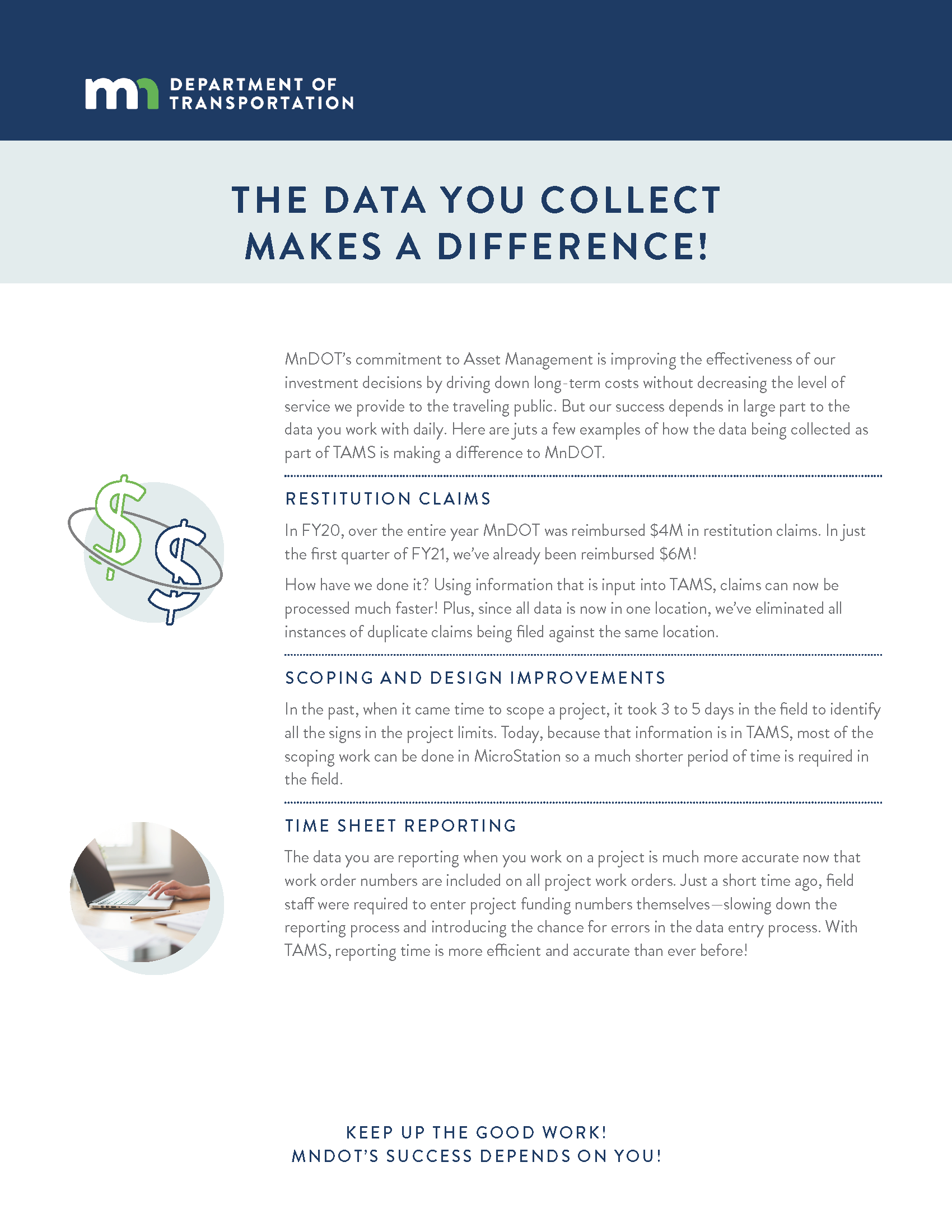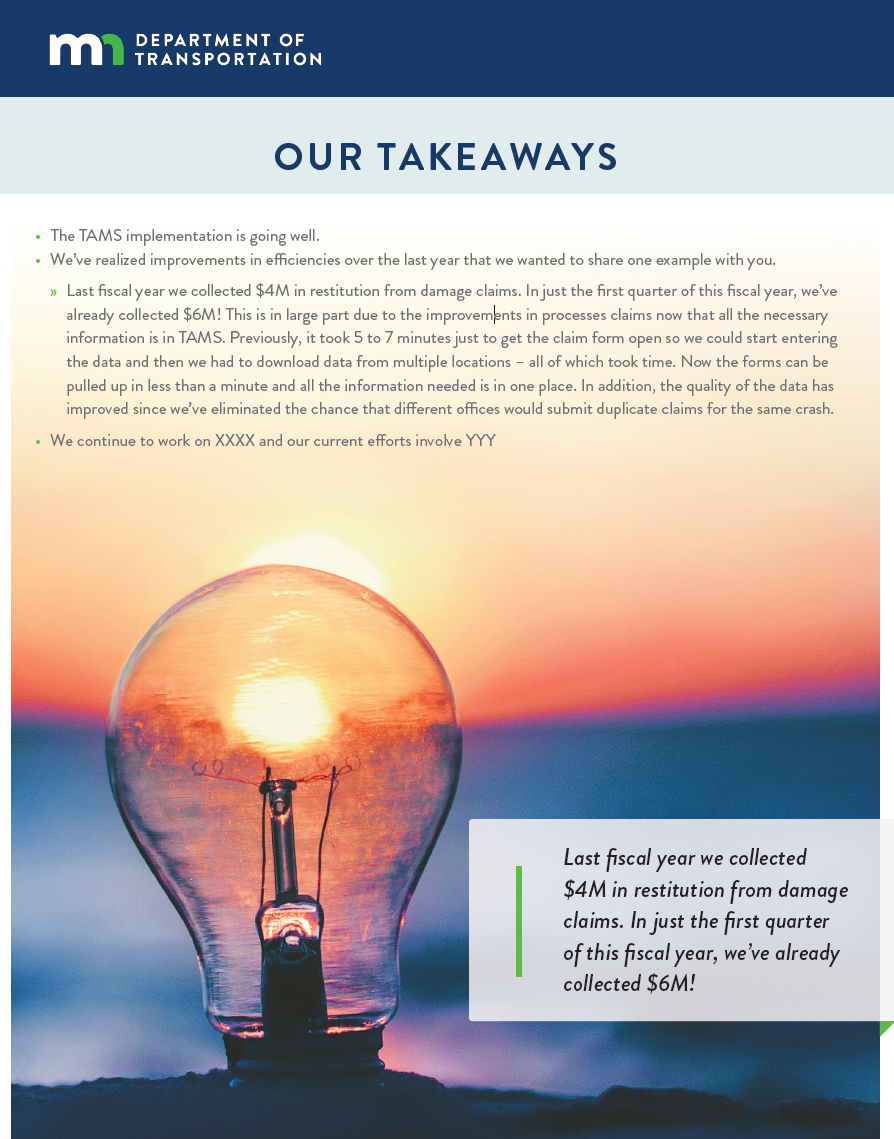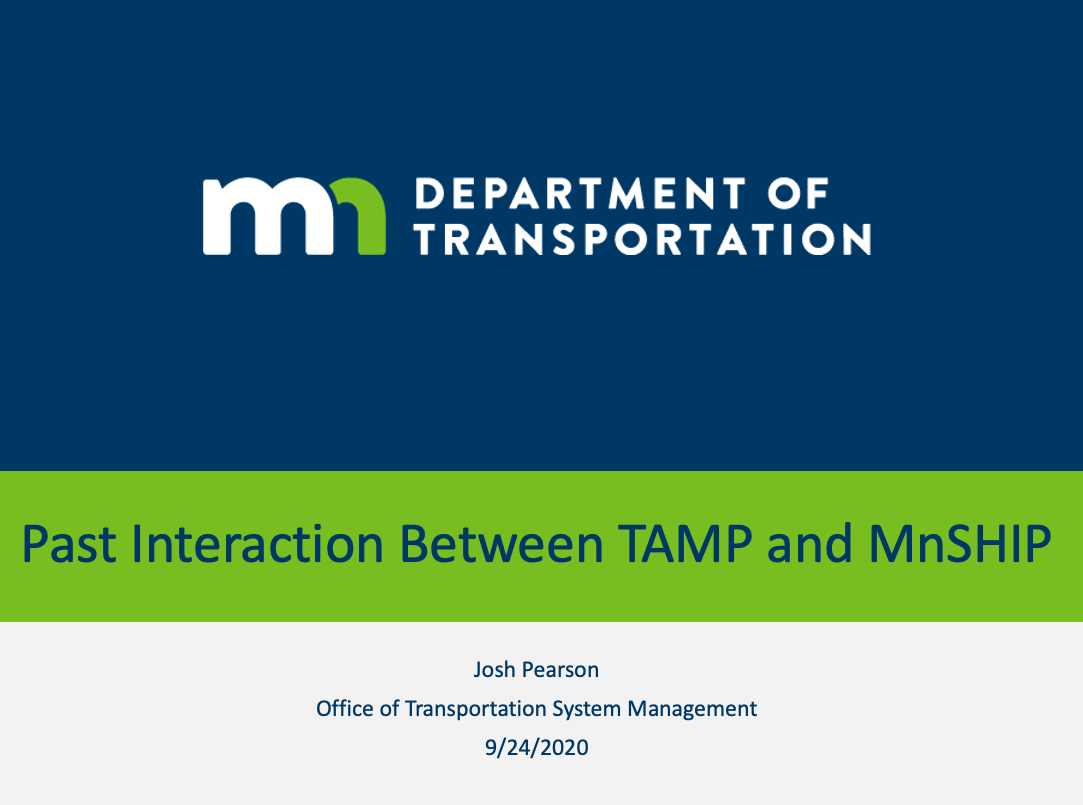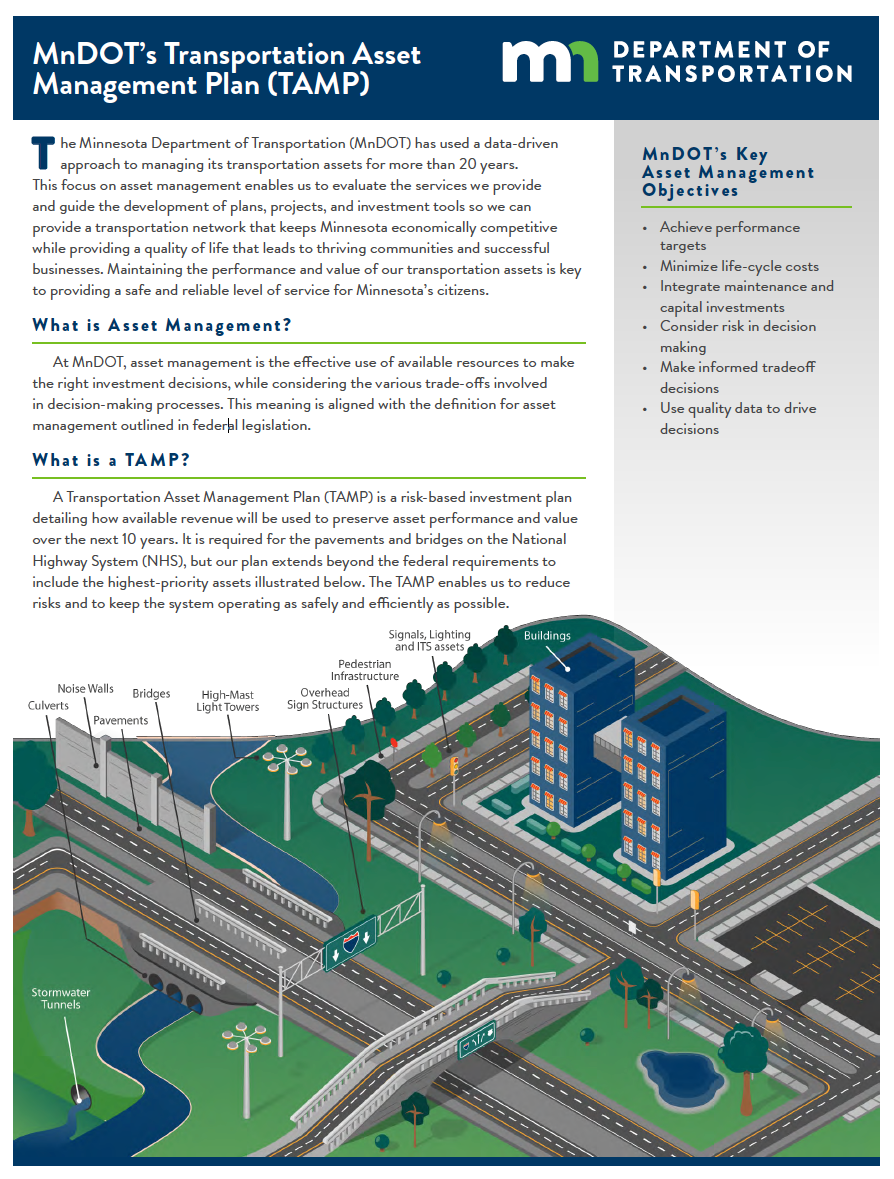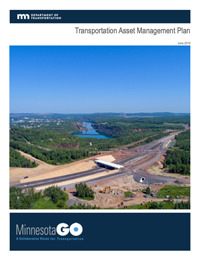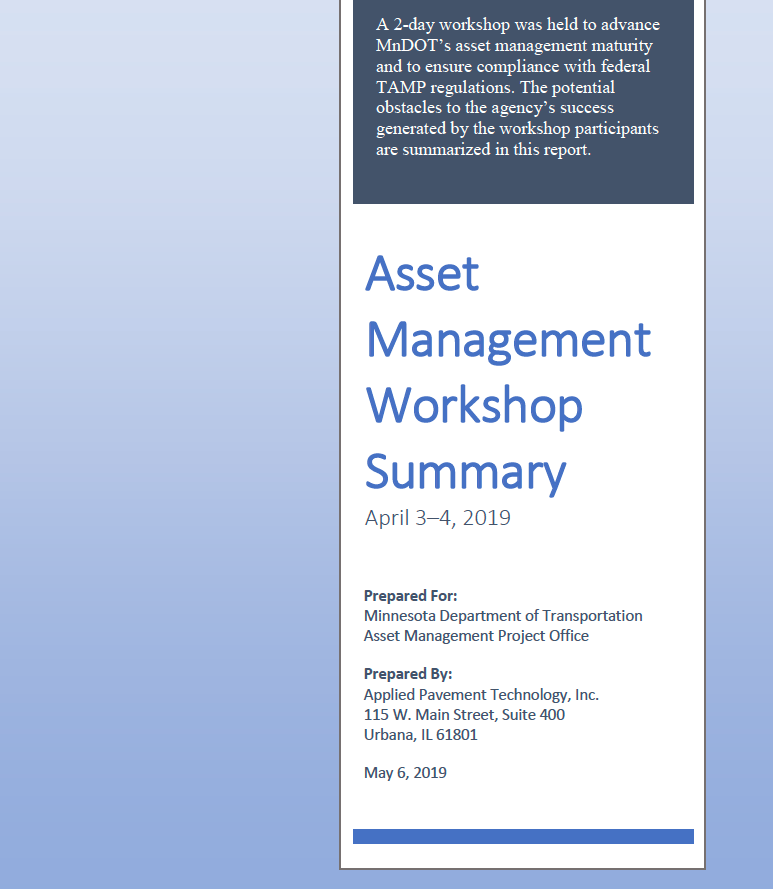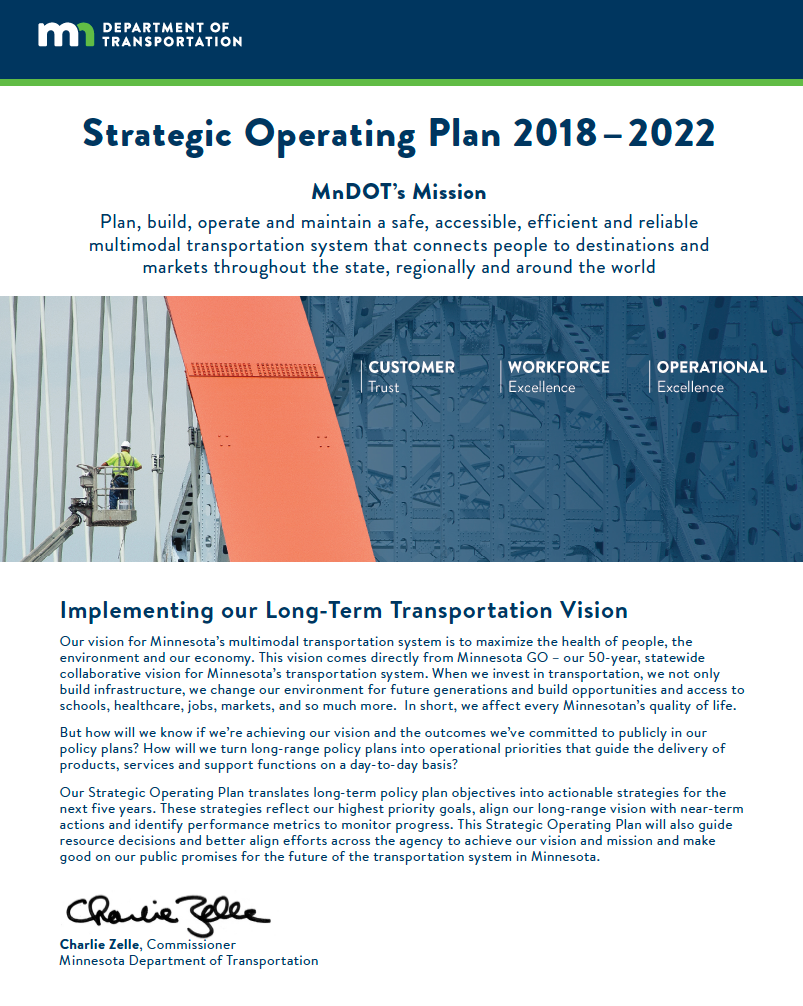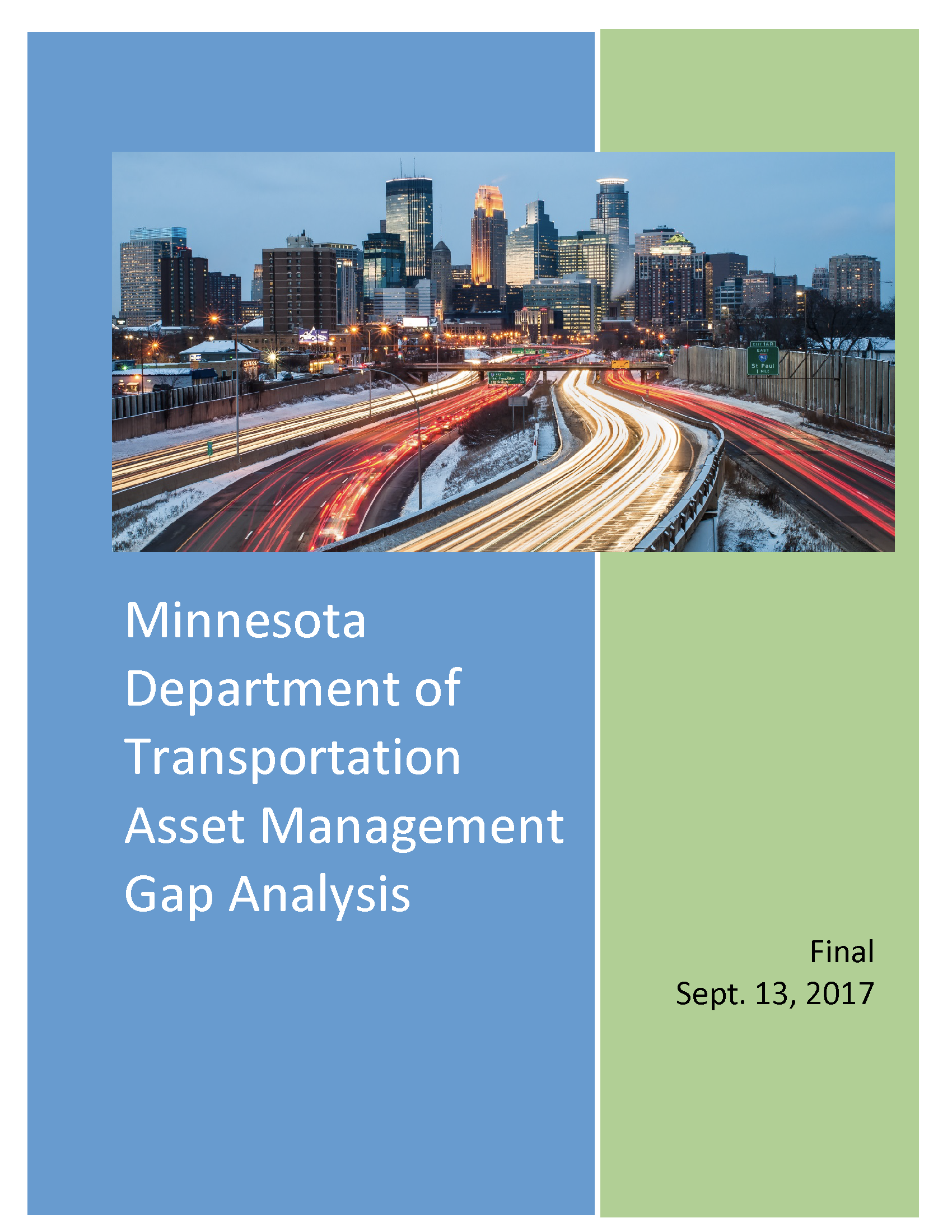The Data You Collect Makes a Difference! | Flyer/Handout
This is a one-page flyer for the district and central office staff on the importance of data collection.
Quality Data Matters! | Flyer/Handout
This flyer directed toward district and central office management. It offers assistance from AMPO to the managers for conveying the importance of data.
TAMS Marketing Pieces | Flyer/Handout
This marketing piece is directed to the executive leadership and contains a few talking points about the progress.
Past Interaction Between TAMP and MnSHIP | Document
In preparation for the next round of updates to the Minnesota State Highway Investment Plan (MnSHIP), this presentation reviews the relationships and commonalities between the 2014 TAMP, the 2017 MnSHIP and the 2018/19 TAMP. The presentation proposes several ideas for ways to update both documents, and it closes by asking the audience to consider other ways to integrate maintenance and operations into these plans.
MnDOT's Transportation Asset Management Plan (TAMP) | Flyer/Handout
Asset ManagementThis two-sided, one-page flyer introduces MnDOT's TAMP and breaks it down into a handful of key points. The first side is primarily dedicated to explaining what asset management and a TAMP are, while the second side explains three points: what assets MnDOT has, what MnDOT's asset management approach is, and what challenges MnDOT faces as they progress in their asset management practice.
Minnesota DOT TAMP | Plan
Asset Management, Bridge, PavementThe Minnesota DOT TAMP serves as an accountability and communication tool and informs capital and operations planning efforts. In addition to being a federal requirement, the TAMP is a planning tool by which Minnesota DOT can more thoroughly evaluate risks and develop mitigation strategies, analyze life cycle costs, establish asset condition performance measures and targets, and develop investment strategies. It formalizes and documents the following key information to meet federal requirements: description and condition of pavements and bridges on the NHS; asset management objectives and measures; summary of gaps between targeted and actual performance; life cycle cost and risk management analysis; financial plan that addresses performance gaps; and investment strategies and anticipated performance.
Asset Management Workshop Summary | DocumentReport
Asset ManagementThis report summarizes the discussions from the asset management workshop, focusing on life cycle planning, project selection, and MnDOT roles and responsibilities. The document also provides an overview of the workshop agenda. During the breakout sessions, participants were encouraged to raise their thoughts and concerns through a series of guiding questions. The comments highlight the areas that MnDOT seeks to improve, and this document provided some of the input for the practice survey and the strategic plan.
Strategic Operating Plan 2018-2022 | Plan
MnDOT's 2018-2022 Strategic Plan outlines their goals and objectives for this 4-year period. MnDOT underscores their focus on customer trust, operational excellence, and workforce excellence by outlining the importance of each area and their plans for realizing their goals.
Asset Management Gap Analysis | Document
Asset ManagementIn this report, MnDOT addresses the state of asset management and makes a series of recommendations for future work that will advance MnDOT's asset management practices. The recommendations include: formalising AM policies, evaluating new performance measures, selecting statewide priorities and targets, documenting all business processes. standardizing TAMS data decisions, and applying AM in decision-making. The MnDOT Communication Plan strives to achieve these recommended actions.
AASHTO Guide for Enterprise Risk Management | Guide/Manual, Research Report
This guide provides a comprehensive framework to identify and manage risk for state departments of transportation, as well as establish and maintain an enterprise risk management program. It includes extensive summaries of how risk management is being applied nationally and internationally to typical transportation program areas.
Successful Implementation of Enterprise Risk Management in State Transportation Agencies | Research Report
This report was prepared for the AASHTO Standing Committee on Planning in order to identify and analyze how to successfully implement enterprise risk management (ERM). The research involved 44 State DOTs, eventually narrowing down to five case studies. The conclusion was that ERM enhances State DOTs abilities to achieve their goals, resulting in tangible benefits for their constituents, however many programs are still in their early stages.

Apr 2015
